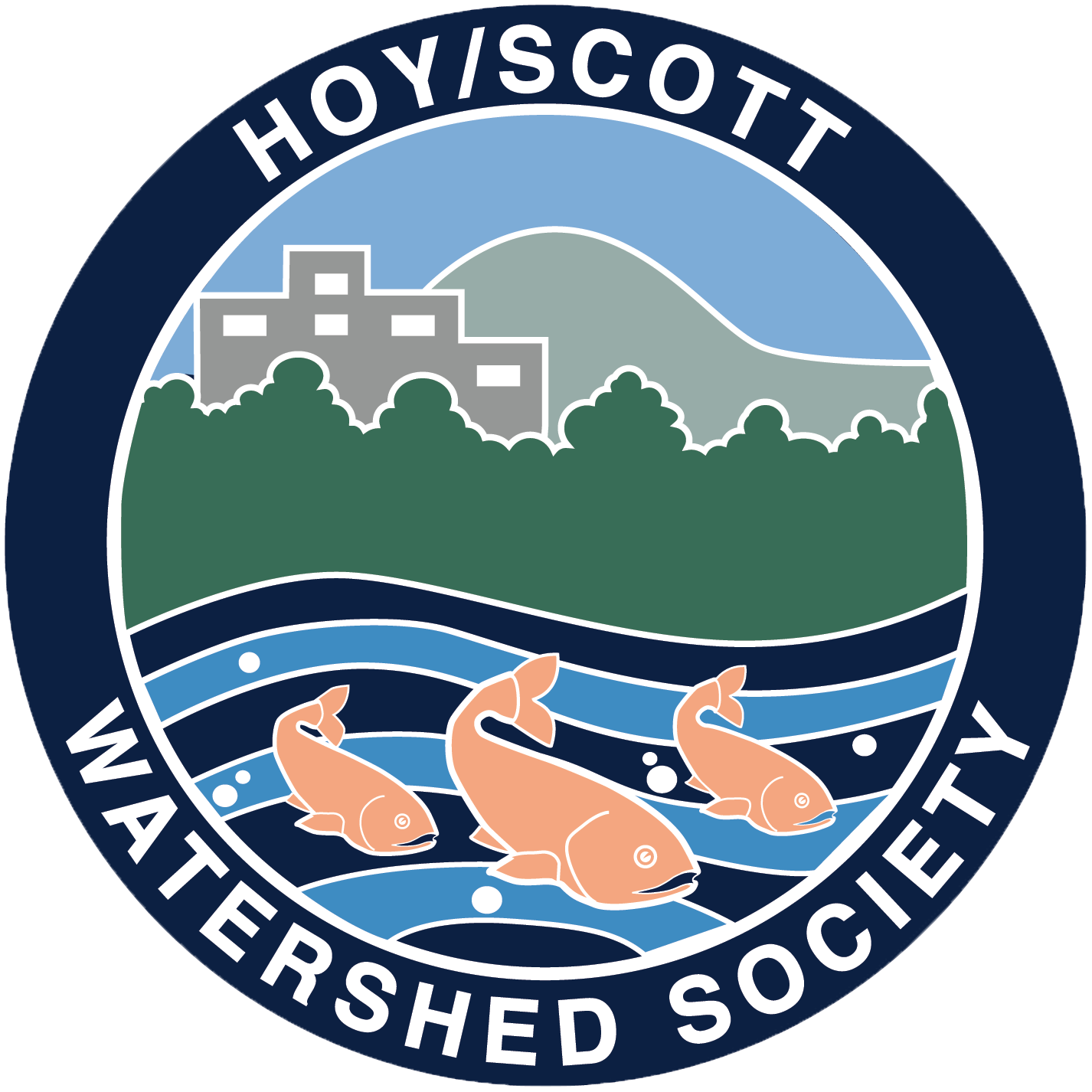Kim Mayes, a volunteer, and director of the Society is leading up this project. She also provided the overview below.
Earlier this year the Hoy/Scott Watershed Society was approached by both Flowlink Environmental and the DFO to see if we were interested in capturing some basic water quality data in order to establish baseline water quality for Hoy Creek. This is something we had already been considering as stewards of Hoy Creek, so jumped on the opportunity to partner with Flowlink and start collecting.
Three sites were chosen along Hoy Creek to begin manually collecting in-situ data, with the support of Flowlink volunteers, who visit the creek weekly to test for and record the following:
Water Temperature
pH
Turbidity
Conductivity
At the time of testing, the current weather conditions are also recorded for reference. This is useful for helping us evaluate how seasonal trends influence the water quality parameters.
At two other locations along Hoy Creek, and with the support of the Departments of Fisheries and Ocean’s (DFO’s) Pacific Science Enterprise Center (PSEC) and their Community Steam Monitoring Project (CoSMo), we have now installed two temperature data loggers as well. This will help us record the data much more frequently (logs hourly), as well as more efficiently. The data loggers can store up to 5 years of data at a time and have a battery life of about 1 ½ years, so require little maintenance. Our aim is to collect the data 2-3 times per year (and when water levels of the creek permit), by removing from their current hidden locations and downloading the data via Bluetooth to a smartphone app. From there the data can be emailed to the DFO for analysis, as well as sharing with other nearby stream keepers.
We have plans to set up a more comprehensive Water Quality Monitoring Program in the near future, which will also include sampling and testing for the following, ideally on a monthly basis.
Alkalinity
Anions scan (nitrate, nitrite, phosphate, sulfate, chloride, fluoride, etc.)
Ammonia
E.coli
Total metals (full suite)
Dissolved oxygen
The overall goals for the program are to be able to identify emerging key water quality issues, allow us to be proactive in identifying spills/contamination sources, as well as raise public awareness, facilitate participation and education of our member volunteers.
We thank both Flowlink and CoSMo for supporting us with this work this far. However, in order to carry out our program initiatives indefinitely, we rely on the support of our volunteer members, and cannot do the important work we do without them.
